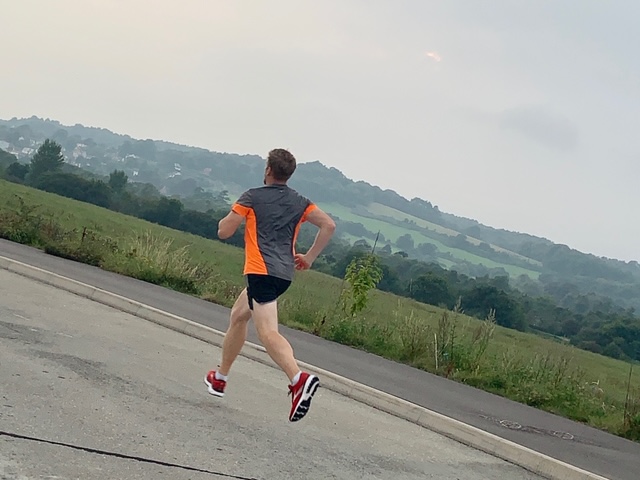
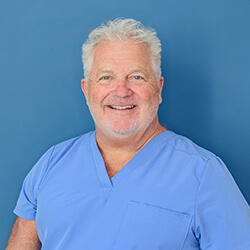
The disappointment of not being able to cross the finish line of a hard trained-for marathon is all too real for many people. Sometimes it's impossible to even begin on the big day due to injuries sustained in training, or maybe you've attempted one before and had to pull out mid-way or found yourself limping to the end with a hugely disappointing completion time.
But it is possible to get across that finish line and pick up your gleaming medal feeling fit, happy and injury-free. Our Sports and Massage Therapist, Daniel Lambourne, based at The House Clinics, Bristol, shares his personal account of how he managed a hip injury and recently went on to complete an Ultra-Marathon (that's 46 miles!) triumphantly. But first, here are some quick tips from our Physiotherapy Team that will put you in good stead.
.jpg)
Not giving yourself enough time to train for a marathon is the most common cause of injury, says Alin Dorneanu, Physiotherapist at The House Clinics, Bristol. Depending on whether you're a beginner, an intermediate, or experienced runner, a training plan might range from between 12-20 weeks. Your body needs to have enough time to train for the distance though, so you need to honestly assess what level you're at and be sensible about planning in the weeks of training you need. Once you know the date of the race, work backward to work out how much time you'll have to train. If it's not enough, find a different race; don't push it!
A running form assessment is a great investment to safeguard against injury and optimize your performance. It takes place in the form of a 'gait analysis' ;an assessment of a runner’s biomechanical movement; everything from where you land on your foot, to your knee placement, to your overall running posture is examined. A podiatrist can also advise you on footwear and any extra support you may need in the form of shoe inserts, orthotics, or strapping. A biomechanical assessment is best performed by a qualified and fully trained Podiatrist, so check before you book. Some running shoe shops offer this service but it's not always done by someone who really understands biomechanics! The assessment has been proven to increase efficiency and decrease the chance of injury by correcting bad form. This type of evaluation can be beneficial for both novice and veteran runners and is appropriate for any distance.
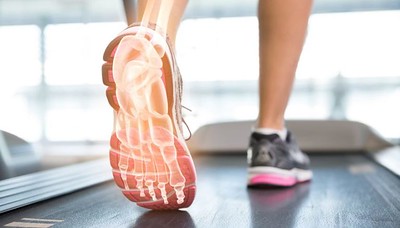
Learning when to rest is a key part of the training, especially when you're doing an event. Sometimes it’s harder to rest than to run but it’s absolutely essential for your body to repair. A lot of conditions, especially tendon problems, require around 24 hours post-run to repair. The body is in a constant balance of tissue breakdown and tissue strengthening, so if you don't allow adequate rest in between runs, it can tip this balance towards breakdown resulting in a more serious injury. It's a good idea to break down each week and have one focus per training session i.e. endurance, strengthening, working speed etc. Don't be tempted to do everything at once or you'll pay the price and not be able to complete the week as planned. Listen to your body, make sure you have some complete rest days, look after your nutrition, and get lots of sleep!
If you do find yourself with any niggling muscle or joint pain, it's important to get advice and treatment, Alin says. There's lots of advice freely accessible on the internet to help you identify the cause and settle symptoms, but if it's a persistent problem your best foot forward would be to see a professional such as a physiotherapist. A physiotherapist will be able to pinpoint the underlying cause of the problem, provide remedial treatment, and give advice on your exercise or training programme to keep you going safely. They may also refer you to a podiatrist if your condition is foot-related and they feel you would benefit from any form of running shoe insert.
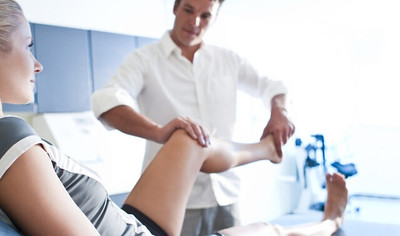
Our last tip is to include strength exercises as an integral part of your running training programme. The most effective way of strengthening is to identify any specific weaknesses and then work on them. Common areas are calf, glutes, and quads. Strong muscles can absorb impact more effectively and help improve your running economy (how efficiently a runner uses oxygen while running at a certain pace). Both pilates and yoga can be great ways of doing strength training without hitting the gym and pumping iron - a more restful and relaxing way of increasing your core and overall body strength and giving yourself a break from the intensity of your running sessions.

Daniel Lambourne is an experienced sports and massage therapist at The House Clinics, Bristol, and knows a thing or two about the disappointment of injury, getting fit again and finally crossing the finish line, injury-free and on top form!
Rewind back to 5th May 2019 and I had just completed my first marathon in Newport, Wales. Training had been going really well and I was hoping to aim for a 3hr 45mins finish time, however, about 6 weeks prior to the start I developed a left hip injury. Luckily with a couple of chiropractic and physio sessions and most importantly REST, I was able to make the start line. I remember standing there wondering whether I would make it around the 26.2 miles or if the hip injury might flare up again. But I took it slow and steady and tried to remain sensible. Sadly at around halfway, I noticed a niggle, and by mile 17 it had become more than a niggle and I had to start walking. Those last 6-8 miles were mentally tough and actually quite upsetting but eventually, I crossed the finish line in 4hrs 12mins.
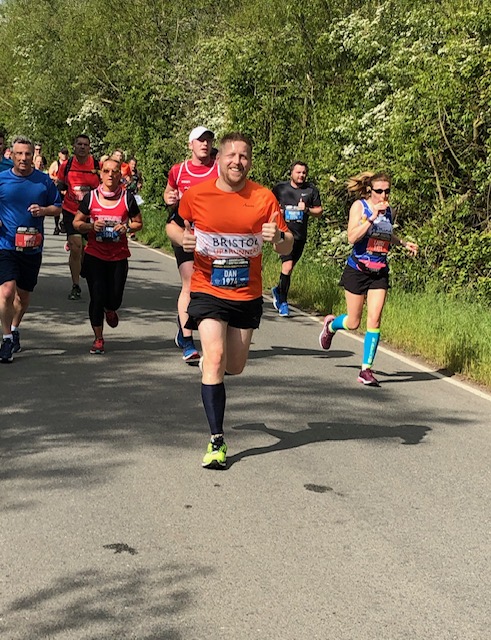
Looking back now I am proud of what I achieved but I swore I wouldn’t do it again…which brings us to 2020 and that word “Lockdown”. At the start of the year, I was managing to get out 3-4 times a week for a run and averaging about 25miles each week. Some friends from a local running club had been trying to convince me to enter an “Ultra-Marathon” but I kept saying no and I knew I wouldn’t have the time to commit to training.
As the end of March approached and lockdown really started to take hold, I could no longer offer treatments at the clinic, and homeschooling became the new norm with which 3 children at home 24/7 brought about its own stresses. Personally, I find running great for the mind and it really helps to clear the head. 3-4 runs a week turned into 7 runs a week and the average miles started to tip over 36 miles a week.
Suddenly I found myself looking at all these Facebook adverts about Ultra-Marathons that might go ahead later in the year once the Coronavirus had passed, and I had time on my hands meaning I could no longer use the excuse of not having enough of said time to sufficiently and sensibly train. Things escalated quite quickly and out of the blue I’d paid to enter a popular local race called the Green Man Ultra that loops around our beautiful city of Bristol, following the distributed woodland of the community forest paths and offers two distances of 30 miles and 46 miles, and you can probably guess which option I chose?!?
Training started…the daily miles gradually increased week by week at a rate that shouldn’t cause injury and things got serious. My runs were getting hillier by the week and more challenging and this brought about fatigue and sore legs which couldn’t be helped by booking in for a sports massage so I turned to online Yoga. This made such a difference and the confidence grew. I broke the 46 miles into smaller segments and started to recce the route as the race is self-navigational and to say you need to confidently know where you are going is an understatement. My love for running in the countryside (trail running) took over and I just loved to explore routes and places I’d never even considered visiting before, and was coming across some beautiful scenery. My favourite long training run took place on 12th July where I made the decision to get up early and catch the sunrise as it rose over the Mendips, so there I was at 04:53 am on the top of what felt like a mountain, running and loving every single minute.

Sadly not long after that training run, I received the dreaded email that so many runners have been receiving throughout 2020 saying that it was still not deemed safe enough to hold the race and it had been canceled until next year. All that training for nothing right? Well, not necessarily. The training had been done, I was feeling great, and I was confident I knew the route so I decided I was going to run it anyway “just for fun”. So there I was, 1 week away from tackling the Green Man solo without any fellow competitors and without the 4 checkpoints for refueling. Fingers crossed it goes ok…but one thing is for certain - at least I know that now restrictions have been eased once I have done it I work with a fantastic team of professionals at The House Clinics that no matter what will be able to help fix me and put me back together ready for the next challenge!
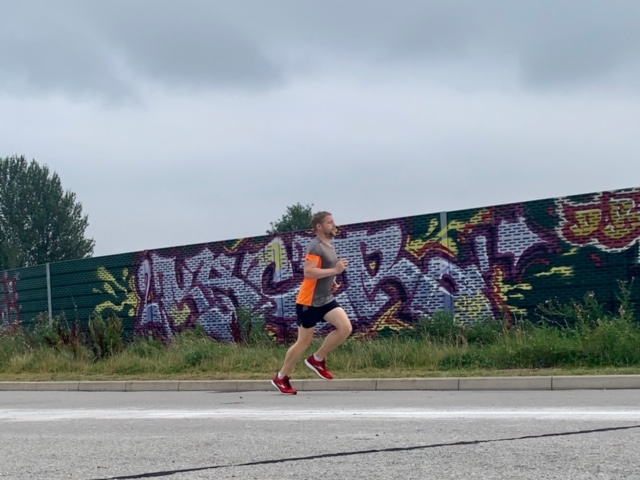
What’s next you may ask? Who knows, but if you hear me utter the words NEVER AGAIN I probably don’t mean it really!!!
.png) For Injury Advice, Physiotherapy and Podiatry Enquires
For Injury Advice, Physiotherapy and Podiatry Enquires